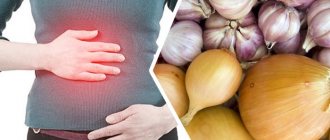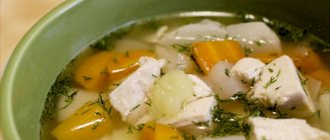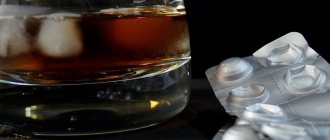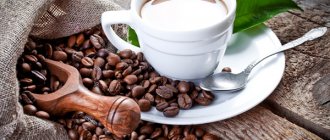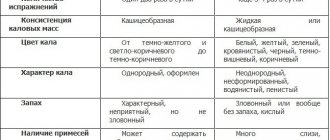Any person needs daily dosed physical activity. Of course, such a load should be moderate. Special gymnastic complexes have been developed that can be performed by patients on the third day after an acute stroke. As a rule, this includes exercises for the respiratory system.
Moderate physical activity for pancreatitis is not at all contraindicated, and can even bring immeasurable benefits to the patient. The choice of a set of sports exercises must be approached carefully, and only activities that are safe for health must be chosen.
How physical activity affects the functioning of the pancreas
Moderate physical activity has only a positive effect on human health. It is necessary to agree with the attending physician how often and how intensely the patient will exercise. The doctor, when providing recommendations, is based on the clinical picture, the patient’s age and a number of other criteria. Even a completely healthy person may be at risk if this ratio is violated.
And yet, in the case of physical activity with pancreatitis, there are many restrictions. Carrying out certain movements, as well as lifting heavy objects, can put pressure on the abdominal cavity. This phenomenon is especially dangerous in the case of inflammation of the pancreas, because the parenchyma of the organ is already in a state of swelling due to the ongoing inflammatory process. As a result, the outflow of bile is aggravated, stagnant processes appear, which only provokes an exacerbation of the disease.
Physical activity during pancreatitis of the pancreas can cause stones to move through its ducts, and this will require surgical treatment. It is important to take into account that during the course of the chronic form of the disease, insulin production is disrupted. To maintain a person's energy level at the proper level, adequate absorption of glucose is necessary. If the normal course of this process is impossible, diabetes begins to develop. As a result, overload of the body can not only cause exacerbation of pancreatitis, but also cause the development of a number of other diseases.
What causes pancreatitis?
First of all, alcohol abuse. For those who drink frequently and immoderately, this disease is not uncommon. But even a single dose of alcohol, if combined with a large amount of fatty and spicy snacks, can cause an attack of acute pancreatitis. Any infection can provoke inflammation of the pancreas - the same sore throat or flu, as well as mumps, even in children.
Diseases of other organs often lead to the development of pancreatitis:
- Gastrointestinal tract – cholelithiasis;
- cholecystitis;
- hepatitis;
- cirrhosis of the liver;
- peptic ulcer
Even chronic gastritis can lead to pancreatitis. Injuries and surgeries on the pancreas and bile ducts are also among the causes of pancreatitis.
The mechanism of development of the disease is as follows: inactive pancreatic enzymes are retained in the pancreas, become activated and begin to digest its tissue. The result is swelling, inflammation, necrosis and general intoxication of the body.
Permissible loads for pancreatitis
Speaking about sports with pancreatitis - whether it is possible or not to engage in it without harm to health, it is worth understanding that such activities should be aimed at shortening the rehabilitation period after suffering from an illness. It is necessary to accelerate the process of tissue regeneration, to resume the functioning of the exocrine and endocrine functions of the pancreas. A physical therapy specialist, a doctor, who will select the optimal exercises and create a treatment complex for the patient, will help you achieve these goals.
The maximum permissible rate of physical activity depends on the stage of pancreatitis in the patient, the severity of the existing inflammation, the patient’s age and weight, the level of general sports training and the presence of concomitant diseases - the presence of arterial hypertension, arrhythmia, angina pectoris, pulmonary damage, nervous, musculoskeletal and other body systems.
Only by taking into account the above factors can one correctly determine the normal level of physical activity for a patient with pancreatitis, as well as create a therapeutic set of exercises for the patient.
What should you limit yourself to if you are sick?
First of all, diet - no spicy foods or alcohol, and no smoking. Rich, fatty, spicy and fried foods should be excluded from the diet of a patient with pancreatitis. He should strictly follow the diet - eat food not once or twice a day while running, but five times during the day with an interval of no more than four hours, and heated food - not cold or hot. Of course, without waiting for an exacerbation, you should support the functioning of the pancreas with enzymes, taking them in courses. Restrictions also apply to physical activity - you cannot lift or carry bags weighing more than 3 kg, or exercise your abs. Running with pancreatitis is not recommended. The most beneficial are swimming, slow walking, yoga, breathing exercises, and Pilates.
When can you play sports?
One of the frequently asked questions by patients when they are diagnosed with pancreatitis is whether physical activity can be tolerated with this condition. Light sport is necessary because it helps to normalize the functional functioning of the human nervous system, improve metabolism, normalize blood flow, and maintain muscle tone.
Doctors recommend that patients train at a slow or medium pace, but definitely not as fast as previously. 20-minute complexes, which should be started no earlier than one and a half to two hours after eating, will be effective and at the same time safe. Be sure to pre-ventilate the study room and install a humidifier there.
Every sports training should end with complete relaxation of the person. You need to lie on your back for 5-7 minutes, stretch your arms along your body and breathe calmly.
Training for the chronic stage of pancreatitis
Physical activity during chronic pancreatitis can provoke kinks in the pancreatic ducts, increase pressure inside the abdominal cavity and, as a result, cause an exacerbation of the disease. In the chronic stage of the disease, medical specialists allow breathing exercises to be performed, since proper breathing allows you to increase the supply of oxygen to the patient’s body, normalize his emotional and mental state, relax the mind and tone the muscles, improve intestinal motility, prevent the development or relapse of the disease, as well as increase the flow of bile.
You need to do breathing exercises in the morning, on an empty stomach.
What sports are best to do?
If a patient's chronic pancreatitis is in remission, attempts are made to give the body dosed loads. There should be no subjective complaints or objective clinical signs of exacerbation.
With the help of therapeutic physical culture, the condition of pancreatitis improves. The state of remission is prolonged. The state of the nervous system is stabilized, blood circulation in the internal organs is enhanced.
The main condition for training with pancreatitis is strict control over changes in the intensity of the load. Don't try to force the load too quickly. It is better to first consult with a trainer or attending physician. Physical activity is strictly dosed. Increasing the intensity of training is carried out slowly and smoothly.
The simplest exercise, allowed even for weakened and untrained patients, is complexes of respiratory physical therapy. This includes diaphragmatic breathing and a number of others. The complex has no contraindications and is recommended for all age categories of patients.
Other approved sports for chronic pancreatitis are swimming, Nordic walking. It is permissible to perform gymnastic exercises for the muscles of the limbs.
Absolute contraindications for sports
Doctors usually answer that physical activity for pancreatitis can be used for therapeutic purposes. But there are also cases when playing sports is absolutely contraindicated. If, contrary to the doctor’s recommendations, you start exercising too soon after an attack, you can greatly harm a weak body, increase the activity of the inflammatory process, and worsen the patient’s condition.
Sports training is strictly prohibited in the following cases:
- Any inflammatory process at the acute stage.
- Early stage of rehabilitation after surgery.
- Gallstone disease with large stones in the ducts and gall bladder.
- Serious bleeding disorders, tendency to thrombosis and bleeding.
- Decompensated pathologies of the cardiovascular system.
- Malignant neoplasms.
Contraindications
Sports activities are definitely prohibited for patients with inflammation of the pancreas if:
- bed rest is recommended during periods of acute attacks;
- other serious diagnoses were made simultaneously with pancreatitis;
- there is a history of cardiovascular diseases;
- there have been recent pancreatic injuries or surgical interventions;
- There are age restrictions.
In these cases, permission to resume sports activities is given only by the attending physician after completion of rehabilitation and treatment. This takes into account the age, general fitness and endurance of the patient.
If permission for physical exercise is received from a medical professional, it should be noted that sports that are contraindicated for pancreatitis are:
- All activities that involve sudden movements and changes in body position in space: fast running both short and long distances, any jumps, incl. on a rope, in length and height.
- Weightlifting and lifting heavy weights, such loads lead to an increase in blood and intra-abdominal pressure: power aerobics, training on weight machines in the gym, many bodybuilding exercises.
- Injury-prone and high-energy sports, including boxing and all types of martial arts, many team sports.
Weightlifting and lifting heavy weights are prohibited, as such loads lead to increased blood and intra-abdominal pressure.
You should also refrain from any kind of exhausting long-term training until the body is completely stronger.
Professional sports are excluded due to the severity of the disease.
Pancreatitis and bodybuilding
Bodybuilding requires performing sports exercises associated with heavy and intense loads, using force, and lifting large weights. This kind of physical activity during pancreatitis can cause an increase in intra-abdominal pressure, which will have an extremely negative impact on the patient’s condition.
Exacerbation of the disease can also be caused by other complications that arise as a result of strength sports training of bodybuilder patients:
- pathological changes in bile waste;
- recording changes in blood circulation in the tissues of all abdominal organs, including the pancreas;
- curvature of the gallbladder.
Heavy and intense loads for pancreatitis, which bodybuilding involves, are too much stress for the body. As a result of prolonged repetition of classes, there will be a threat of diabetes. With energy loads, metabolic processes also intensify, and decay products multiply in the circulatory system. After penetrating into the general channel, they are able to irritate organs and provoke an inflammatory process.
Features of the influence of various sports on the gastrointestinal tract
Summary . Every person who is intensely involved in sports has at least once encountered problems with the gastrointestinal tract during competitions or training. The physical condition of an athlete is one of the key factors in achieving their goals, and somatic disorders can interfere with obtaining the desired results. When studying gastrointestinal symptoms in athletes, three groups of causes for their occurrence were identified: physiological, mechanical and associated with nutrition. Timely identification and correction of disorders that arise during physical activity ensure an increase in the quality of life of athletes and the maintenance of high results. The rapid growth in the number of people actively involved in sports in recent years has led to the fact that the function of medical supervision and provision of recommendations on rational nutrition when playing sports is becoming part of the work of primary care doctors, as a result of which it becomes important to study the characteristics of the influence of intense physical activity on organs and systems. The review article presents data on the etiology and mechanisms of the formation of gastrointestinal symptoms in athletes during training and discusses recommendations for preventing their occurrence.
Sport is a part of many people's lives. Every athlete dreams of achieving high results, but various difficulties may arise on the way to them. Factors that can negatively impact an athlete's performance include problems related to the gastrointestinal (GI) tract. Gastrointestinal symptoms are especially common among marathon runners, triathletes and long-distance cyclists. According to statistics, 30-90% of marathon and ultramarathon runners experience intestinal problems. It is worth noting that the nature of abdominal symptoms varies from mild to severe. In many cases, this affects the athlete’s performance and can lead to withdrawal from the race or loss in competitions. All this affects the psychological state of the athlete and his future professional activities. Therefore, a very promising area of sports and internal medicine is the study of the mechanisms of formation of gastrointestinal symptoms during physical activity, as well as the development of recommendations for their correction and prevention. This article summarizes and systematizes modern ideas about the etiology and pathogenesis of gastrointestinal symptoms associated with exercise, and possible approaches to solving this problem.
Analyzing the prevalence of gastrointestinal symptoms in athletes is difficult and involves a number of nuances. Firstly, the information available in the literature reflecting the state of this issue is very heterogeneous in relation to the studied populations: by gender, age, training status of the athlete, as well as environmental conditions, regime and intensity of physical activity. Thus, F. Brouns, E. Beckers found that 30-50% of athletes participating in long-distance competitions experienced problems with the digestive tract [1]. In a study by AE Jeukendrup et al. It was found that 93% of triathletes, after long running in extreme conditions, had complaints from the digestive system [2]. In an observational study by RW ter Steege et al. of 1281 long-distance runners, 45% reported experiencing at least one gastrointestinal symptom [3]. Secondly, an important factor influencing the study of the true prevalence of gastrointestinal disorders associated with exercise is the presence of a history of any disease of the digestive tract. It has been shown that individuals with pre-existing digestive diseases are more likely to experience gastrointestinal symptoms during exercise [4]. It is also difficult to unambiguously interpret the subjective assessment of the severity of the symptom by the athlete himself. It is believed that severe symptoms will include those that affect performance and/or health [5].
From the point of view of a rational approach to the treatment and prevention of gastrointestinal symptoms associated with exercise, an important task is to clearly understand the cause of their development. Obviously, the etiology of gastrointestinal disorders is multifactorial, but all causes can be divided into three large groups: physiological, mechanical or nutrition-related [5, 6].
Physiological reasons
The main pathophysiological mechanism for the occurrence of gastrointestinal symptoms in athletes is ischemia of the digestive organs. Impaired gastrointestinal perfusion during exercise ranges from mild circulatory changes to profound organ ischemia. Therefore, the consequences of hypoperfusion will vary in each individual case. The development of ischemia is preceded by the release of adrenaline from nerve endings during intense exercise, when it binds to the corresponding receptors in the arteriolar wall, vasoconstriction occurs, which leads to an increase in vascular resistance. While in organs with increased activity (heart, lungs, skin, active muscles), resistance, on the contrary, decreases, resulting in a redistribution of blood. At maximum loads, blood supply to the gastrointestinal tract can decrease by 80% [7]. This in turn can cause pain, nausea, vomiting and diarrhea [5, 7], although there is no conclusive evidence for this.
It has been suggested that ischemia of the digestive tract may be a cause of transient exercise-induced abdominal pain [8]. It has been established that in healthy people, ischemia develops against the background of heavy physical activity, but transient abdominal pain associated with it can occur during low-intensity physical exercise [9]. Therefore, ischemia is not a pathogenetic factor in the development of transient abdominal pain caused by exercise.
It has been established that during physical exercise the motility of the gastrointestinal tract can change at various levels. Thus, in the upper sections, peristalsis of the esophagus may slow down, the tone of the lower esophageal sphincter may decrease, and temporary relaxation of the lower sphincter will be prolonged, which can lead to gastroesophageal reflux [10].
The effect of exercise on the small and large intestine is currently not fully understood. KA Rao et al. in their study of 13 runners, they examined the relationship between changes in gastrointestinal motility during exercise and their impact on the occurrence of gastrointestinal symptoms. To do this, all participants in the experiment were divided into 2 groups: the first included 7 athletes who complained of abdominal pain, and the second - control - consisted of 6 athletes who did not experience gastrointestinal symptoms during physical activity. Subjects were asked to take a pH-sensitive radiotelemetry capsule for transient passage through all parts of the gastrointestinal tract. Based on the recording from a special sensor, which was connected to this capsule with a signal, it was possible to evaluate intestinal motility. Based on the study, the authors concluded that small intestinal transit ranged from 3.5 to 10.6 hours in both study groups. The measured variations in transit through the small intestine in athletes from the control group during the rest period ranged from 3.5 to 10.6 hours, and during physical activity - from 3.0 to 8.7 hours (p = 0.91); corresponding transit times for symptomatic athletes ranged from 4.0 to 6.6 hours during rest and 4.6 to 7.3 hours during exercise (p = 0.27). The main finding of this study was that GI transit times were similar between the five control athletes and the six complaining athletes, five of whom had gut symptoms during exercise [11].
Another group of scientists led by PD Neufer determined the effect of a sharp rise in ambient temperature, acclimatization to heat and hypohydration on the rate of gastric emptying. The experiment involved 10 physically healthy men who were asked to drink 400 ml of water before each 15-minute workout; the exercise cycle was repeated 5 times. The study was carried out at different ambient temperatures - 18, 35 and 49 degrees Celsius. Participants were also dehydrated before each phase of the study. Based on the results of the experiment, the following conclusions were drawn: exercise in a hot (49 °C) environment worsens the rate of gastric emptying compared to a temperature of 18 °C, exercise in a warm (35 °C) environment slightly reduces gastric emptying before or after acclimation to heat, but exercise in a warm environment (35 °C) with hypohydration are accompanied by a decrease in the rate of gastric emptying and secretion. Decreased gastric emptying appears to be associated with stress due to changes in ambient temperature [12]. A study conducted by the American College of Sports Medicine demonstrated the significant role of dehydration in combination with exercise in the development of gastrointestinal symptoms and slow bowel movements [13].
An important area of research into exercise-related gastrointestinal symptoms is the analysis of changes in intestinal mucosal permeability during intense exercise. Oktedalen et al. reported increased intestinal permeability after a marathon [14]. There are many methods to assess intestinal permeability, but information is limited to date. In a study involving 20 athletes, M. A. Nieuwenhoven et al. When assessing the performance of the gastrointestinal tract (bowel motility and bowel movement, permeability and rate of glucose absorption) during exercise, they concluded that intestinal permeability increased with running (p = 0.005) and was higher in athletes with gastrointestinal symptoms (p = 0.008) [ 15]. In contrast, in another study, triathletes under extreme conditions, in which gastrointestinal symptoms were widespread, did not experience intestinal barrier dysfunction as measured by changes in lipopolysaccharide levels. This method is a marker of mucosal damage and the penetration of gram-negative intestinal bacteria and/or their toxic components (endotoxins) into the bloodstream [16]. More research is needed to get a clearer picture of the causes of gastrointestinal distress.
Mechanical reasons
The mechanical causes of problems in the gastrointestinal tract are associated with the specific actions of the athlete. This is explained by the fact that running involves repetitive movements associated with strong shocks and impacts, which can damage the intestinal mucosa. Mechanical trauma to the intestine from repetitive running combined with intestinal ischemia leads to abdominal pain and other intestinal symptoms [17].
In cyclists, posture plays an important role, since due to the bent position there is increased pressure on the abdomen, especially in the aerial position, thereby increasing the prevalence of upper gastrointestinal symptoms [18].
A recent epidemiological study conducted on a cohort of US high school students found that, overall, athlete-related abdominal injuries are rare, but they do occur [19]. Abdominal injuries in athletes can range in severity from mild abdominal distension to significant organ rupture and internal bleeding.
Diet-related reasons
Nutrition is one of the main factors in the development of gastrointestinal symptoms [5, 6, 20]. The relationship between eating habits (eating habits/dietary intake) and the development of gastrointestinal symptoms was demonstrated in their study by Rehrer et al. Scientists surveyed 50 male triathletes after completing an Iron Man competition. All athletes who ate within 30 minutes before the start of the competition vomited during the swim. Nausea and vomiting were also observed in those who ate fatty or protein foods before the start. All patients with intestinal cramps ate foods rich in fiber before the competition [21].
Highly concentrated carbohydrate solutions can delay gastric emptying and cause fluid to move into the intestinal lumen, thereby triggering gastrointestinal symptoms. There have been several studies on this issue, but they were with small samples. In a study by Wallis et al. reported more severe gastrointestinal symptoms in women with high carbohydrate intake (1.0 or 1.5 g/min) than in women with low intake (0 or 0.5 g/min) during exercise [22] . In a larger study of 221 athletes competing in marathons, iron man races, or other long-distance events, carbohydrate intake was also positively correlated with participants' nausea and flatulence [23]. It can be assumed that it is not simply the consumption of carbohydrates that causes gastrointestinal symptoms, but a complex interaction of a number of factors, such as the concentration of carbohydrates, their type, osmolarity and acidity of the drink.
It should be noted that carbohydrate intake may help maintain plasma glucose concentrations and prevent hypoglycemia, preserve liver glycogen stores, and in some cases slow muscle glycogen depletion. Therefore, it is necessary to focus on what amount and what concentration of carbohydrates can prevent the development of gastrointestinal symptoms. AE Jeukendrup et al. Based on the results of a study involving 20 healthy men, they concluded that with an increase in glucose concentration above 6%, the rate of water transport through the intestinal wall decreases, as osmolarity in the intestinal lumen increases, thereby retaining water. However, the sodium content in solutions did not affect fluid transport through the intestinal wall [24]. In the International Journal of Sport Nutrition and Exercise Metabolism, Xiaocai Shi et al. published a study that looked at the effects of different carbohydrate concentrations on the development of gastrointestinal symptoms in athletes during intermittent high-intensity exercise. The double-blind, randomized study involved 36 athletes who were asked to consume 6% or 8% carbohydrate-electrolyte drinks during four 12-minute bouts of intense circuit training involving running and jumping. The cumulative index of gastrointestinal discomfort was higher with an 8% carbohydrate-electrolyte drink compared with a 6% carbohydrate drink (<0.05). On average across all 4 exercise cycles, the use of an 8% carbohydrate-electrolyte drink was more often associated with gastrointestinal symptoms (p < 0.05) [25].
X. Shi et al. assessed the effectiveness of various carbohydrate solutions in restoring fluid balance after exercise. The study involved 9 people who were dehydrated by 1.99 ± 0.07% of body weight as a result of intermittent exercise in the heat. 30 minutes after stopping exercise, subjects drank as desired for 120 minutes. The drinks contained 31 mmol/L Na+ as NaCl and 0%, 2% or 10% glucose with mean osmolarities of 74 ± 1, 188 ± 3 and 654 ± 4 mOsm/kg, respectively. The authors concluded that hypertonic carbohydrate-electrolyte solutions are as effective in restoring fluid balance in the body as hypotonic carbohydrate-electrolyte solutions [26].
Glucose transport across the brush border occurs via the sodium-dependent glucose transporter (SGLT1), whereas fructose is taken up by GLUT5. It has been established that taking a combined solution (glucose + fructose) increases gastric emptying and “fluid delivery” compared to a solution of glucose alone [27].
There is still no consensus on the ideal glucose/fructose ratio to prevent gastrointestinal problems. Wendy J. O'Brien examined the effects of varying carbohydrate concentrations on athletes' performance in a randomized, double-chain study. Participants were 10 cyclists who, during physical activity, consumed one of the following drinks: sweetened water or a carbohydrate-saline solution containing fructose and maltodextrin in various proportions (4.5% and 9%, 6% and 7.5%, and 7.5 % and 6% respectively). The author concluded that a carbohydrate-saline solution containing fructose (6%) and maltodextrin (7.5%) caused the least amount of stomach discomfort [28].
It is hypothesized that the gut may be "trainable" to reduce gastrointestinal distress. The main way is to increase the absorption capacity of the intestine, since in this case less highly concentrated carbohydrates will remain in the intestinal lumen, and this can prevent the development of symptoms. A study by Cox et al. well demonstrated the adaptive capacity of the intestine. Under observation were 16 athletes involved in cycling or triathlon, who were randomized into 2 groups: some drank just water for 28 days during exercise, and others drank a glucose solution (10%). At the end of physical activity on day 1 and days 24-28, the rate of oxidation of substances in working muscles was assessed. The authors concluded that in the high-carbohydrate beverage group, there was an increase in overall substrate oxidation after a month of “gut training,” suggesting that the gut is trainable and can be adapted to absorb more substances [29].
GP Lambert et al. assessed fluid tolerance during repeated drinking sessions during running. During five series of races, the subjects drank a volume of solution every 10 minutes equal to the fluid lost through sweat. After processing the results, the authors concluded that drinking a given volume of water (during intense exercise) helps prevent the development of gastrointestinal symptoms during exercise, while the rate of gastric emptying does not change under such conditions [30].
Conclusion
Based on the totality of the data reviewed, we can conclude that a fairly large number of athletes in their professional activities encounter gastrointestinal symptoms, which can negatively affect their performance and achievement of high results. It is very important to correctly assess the manifestations of various gastrointestinal symptoms, since some of them do not pose much danger, while others can cause serious health problems. An actual solution to prevent unwanted symptoms may be the use of the correct concentration of highly concentrated carbohydrates and the correct choice of their type, following the principles of rational nutrition. Eating multiple tolerable carbohydrates is a good strategy for improving performance, likely due to a reduction in gastrointestinal distress as fewer residual carbohydrates remain in the gut. “Training” the gut with high intakes of highly concentrated carbohydrates may increase absorptive capacity and likely prevent the development of gastrointestinal symptoms.
CONFLICT OF INTEREST. The authors of the article have confirmed that there is no conflict of interest to disclose.
CONFLICT OF INTERESTS. Not declared.
Literature/References
- Brouns F., Beckers E. Is the gut an athletic organ? Digestion, absorption and exercise // Sports Med. 1993. Vol. 15. No. 4. P. 242-257.
- Jeukendrup AE, Vet-Joop K, Sturk A, et al. Relationship between gastro-intestinal complaints and endotoxaemia, cytokine release and the acute-phase reaction during and after a long-distance triathlon in highly trained men // Clin Sci (Lond). 2000. Vol. 98. No. 1. P. 47-55.
- ter Steege RW, Van der Palen J., Kolkman JJ Prevalence of gastrointestinal complaints in runners competing in a long-distance run: an internet-based observational study in 1281 subjects // Scand J Gastroenterol. 2008. Vol. 43. No. 12. P. 1477-1482.
- Pfeiffer B., Stellingwerff T., Hodgson AB, et al. Nutritional intake and gastrointestinal problems during competitive endurance events // Med Sci Sports Exerc. 2012. Vol. 44. No. 2. P. 344-351.
- Livzan M. A., Gaus O. V., Turchaninov D. V., Popello D. V. Abdominal pain syndrome among young people: prevalence and risk factors // Experimental and clinical gastroenterology. 2019. No. 170 (10). pp. 12-17. Eksperimental'naya i klinicheskaya gastroenterologiya. 2022. No. 170 (10). pp. 12-17.]
- Akhmedov V. A., Orlov I. N., Gaus O. V. Modern methods of rehabilitation of patients with irritable bowel syndrome // Therapy. 2022. No. 3 (13). pp. 49-55. Terapiya. 2022. No. 3 (13). pp. 49-55.]
- Van Wijck K., Lenaerts K., Grootjans J., et al. Physiology and pathophysiology of splanchnic hypoperfusion and intestinal injury during exercise: strategies for evaluation and prevention // Am J Physiol Gastrointest Liver Physiol. 2012. Vol. 303. No. 2. P. G155-G168.
- ter Steege RW, Kolkman JJ Review article: the pathophysiology and management of gastrointestinal symptoms during physical exercise, and the role of splanchnic blood flow // Aliment Pharmacol Ther. 2012. Vol. 35. No. 5. P. 516-528.
- Morton DP, Callister R. Factors influencing exercise-related transient abdominal pain // Med Sci Sports Exerc. 2002. Vol. 34. No. 5. P. 745-749.
- Peters HP, Wiersma JW, Koerselman J., et al. The effect of a sports drink on gastroesophageal reflux during a run-bike-run test // Int J Sports Med. 2000. Vol. 21. No. 1. P. 65-70.
- Rao KA, Yazaki E., Evans DF, Carbon R. Objective evaluation of small bowel and colonic transit time using pH telemetry in athletes with gastrointestinal symptoms // Br J Sports Med. 2004. Vol. 38. No. 4. P. 482-487.
- Neufer PD, Young AJ, Sawka MN Gastric emptying during exercise: effects of heat stress and hypohydration // Eur J Appl Physiol Occup Physiol. 1989. Vol. 58. No. 4. P. 433-439.
- Rehrer NJ, Beckers EJ, Brouns F., ten Hoor F., Saris WH Effects of dehydration on gastric emptying and gastrointestinal distress while running // Med Sci Sports Exerc. 1990. Vol. 22. No. 6. P. 790-795.
- Oktedalen O., Lunde OC, Opstad PK, Aabakken L., Kvernebo K. Changes in the gastrointestinal mucosa after long-distance running // Scand J Gastroenterol. 1992. Vol. 27. No. 4. P. 270-274.
- Van Nieuwenhoven MA, Brouns F., Brummer RJ Gastrointestinal profile of symptomatic athletes at rest and during physical exercise // Eur J Appl Physiol. 2004. Vol. 91. No. 4. P. 429-434.
- Jeukendrup AE, Vet-Joop K, Sturk A, et al. Relationship between gastro-intestinal complaints and endotoxaemia, cytokine release and the acute-phase reaction during and after a long-distance triathlon in highly trained men // Clin Sci (Lond). 2000. Vol. 98. No. 1. P. 47-55.
- Rudzki SJ, Hazard H., Collinson D. Gastrointestinal blood loss in triathletes: it's etiology and relationship to sports anemia // Aust J Sci Med Sport. 1995. Vol. 27. No. 1. P. 3-8.
- Waterman JJ, Kapur R. Upper gastrointestinal issues in athletes // Curr Sports Med Rep. 2012. Vol. 11. No. 2. P. 99-104.
- Johnson BK, Comstock RD Epidemiology of Chest, Rib, Thoracic Spine, and Abdomen Injuries Among United States High School Athletes, 2005/06 to 2013/14 // Clin J Sport Med. 2022. No. 27. P. 388-393.
- Gaus O. V., Livzan M. A. IBS: what do we know about the symptoms today? // Consilium Medicum. 2022. T. 21, No. 8. P. 42-48. Consilium Medicum. 2022. T. 21, No. 8. pp. 42-48.]
- Rehrer NJ, van Kemenade M., Meester W., Brouns F., Saris WH Gastrointestinal complaints in relation to dietary intake in triathletes // Int J Sport Nutr. 1992. Vol. 2. No. 1. P. 48-59.
- Wallis GA, Yeo SE, Blannin AK, et al. Dose–response effects of ingested carbohydrate on exercise metabolism in women. // Med Sci Sports Exerc. 2007. No. 39. P. 131-138.
- Pfeiffer B., Stellingwerff T., Hodgson AB, et al. Nutritional intake and gastrointestinal problems during competitive endurance events // Med Sci Sports Exerc. 2012. No. 44. P. 344-351.
- Jeukendrup AE, Currell K., Clarke J., Cole J., Blannin AK Effect of beverage glucose and sodium content on fluid delivery // Nutr. Metab. (Lond.). 2009. No. 6. P. 9.
- Shi X., Horn MK, Osterberg KL, Stofan JR, Zachwieja JJ, Horswill CA, Passe DH, Murray R. Gastrointestinal discomfort during intermittent high-intensity exercise: Effect of carbohydrate-electrolyte beverage // Int. J. Sport Nutr. Exerc. Metab. 2004. No. 14. P. 673-683.
- Evans GH, Shirreffs SM, Maughan RJ Postexercise rehydration in man: the effects of carbohydrate content and osmolality of drinks ingested ad libitum // Appl Physiol Nutr Metab. 2009. Vol. 34. No. 4. P. 785-793.
- Jeukendrup AE, Moseley L. Multiple transportable carbohydrates enhance gastric emptying and fluid delivery // Scand. J. Med. Sci. Sports. 2010. No. 20. P. 112-121.
- O'Brien WJ, Rowlands DS Fructose-maltodextrin ratio in a carbohydrate-electrolyte solution differentially affects exogenous carbohydrate oxidation rate, gut comfort, and performance // Am. J. Physiol. Gastrointest. Liver Physiol. 2011. No. 300. P. G181-G189.
- Cox GR, Clark SA, Cox AJ, et al. Daily training with high carbohydrate availability increases exogenous carbohydrate oxidation during endurance cycling // J Appl Physiol. 2010. No. 109. P. 126-134.
- Lambert GP, Lang J., Bull A., Eckerson J., Lanspa S., O'Brien J. Fluid tolerance while running: effect of repeated trials // Int J Sports Med. 2008. Vol. 29. No. 11. P. 878-882.
V. A. Akhmedov1, Doctor of Medical Sciences, Professor D. A. Gavrilenko
Federal State Budgetary Educational Institution of Higher Education Omsk State Medical University of the Ministry of Health of Russia, Omsk, Russia
1Contact information
DOI: 10.26295/OS.2021.13.29.005
Peculiarities of the influence of playing various sports on the organs of the gastrointestinal tract / V. A. Akhmedov, D. A. Gavrilenko For citation: Akhmedov V. A., Gavrilenko D. A. Peculiarities of the influence of playing various sports on the organs of the gastrointestinal tract // Attending doctor. 2021; 2 (24): 26-29. Tags: abdominal pain, athletes, physical activity, quality of life
The benefits of breathing exercises for patients with pancreatitis
To keep the body in good shape, you need to regularly engage in special breathing exercises. The movements are simple, but they work the muscles perfectly and provide a light healing massage of the internal organs. As a result of constant well-designed training, you can achieve the following results:
- saturation of cells with oxygen;
- complete emotional and physical relaxation;
- normalization of emotional background;
- improved mood;
- muscle toning;
- improving the quality of intestinal motility.
It is recommended to do breathing exercises early in the morning, after waking up, always on an empty stomach. You should not exercise immediately after eating. The main essence of the exercises is to increase the volume of the chest through inhalation and exhalation, drawing in the abdomen as you exhale. The process of inhalation and exhalation is divided into passages, which are accompanied by controlled shocks and tension of the abdominal wall.
The healing effects of yoga
Is physical activity possible for pancreatitis or not? Many people ask this question. As has already become clear, sports are useful for patients, but much depends on the type of activity and its intensity.
For chronic pancreatitis, yoga is often recommended. This is gymnastics, which includes physical exercises based on statics and flexibility, and breathing manipulations. Also, thanks to meditative practice, you can improve your psychological state and achieve emotional balance.
For patients with pancreatitis, hatha yoga is recommended. It involves the use of simple positions that even a person with no training can perform. The most popular asanas include:
- "mountain";
- "tree";
- "horizon";
- "warrior";
- "triangle";
- "hero".
Asanas such as “dog”, “forward bend”, “wide angle”, “camel and cat” are recommended to be performed for chronic inflammation of the pancreas.
Physical exercises for people suffering from pancreatitis will be useful and effective helpers in the fight against the disease only if the patient follows the doctor’s recommendations before and during exercise. Workouts must be properly selected, taking into account contraindications, and also be performed at a moderate pace.
What to remember when dealing with pancreatitis
When choosing a set of sports exercises for pancreatitis, the following factors are taken into account:
- Stage of progression and clinical form of pancreatitis. The disease in the acute stage will be a contraindication for physical activity. At this time, the patient needs complete rest; sports activities will have to be postponed until better times.
- When selecting a training complex, the patient’s age and concomitant chronic diseases are taken into account. A number of exercises allowed for pancreatitis are prohibited if the patient has other diseases.
- If you have a chronic pancreatic disease, you will have to forget about big-time sports and achieving Olympic results.
- If a person had physical training before the onset of the disease, stronger loads are permissible than for someone who has not previously played sports.
- It is necessary to select a complex for training individually. It is better to make a choice with professional help, checking with your doctor whether it is allowed to start playing a certain sport.




